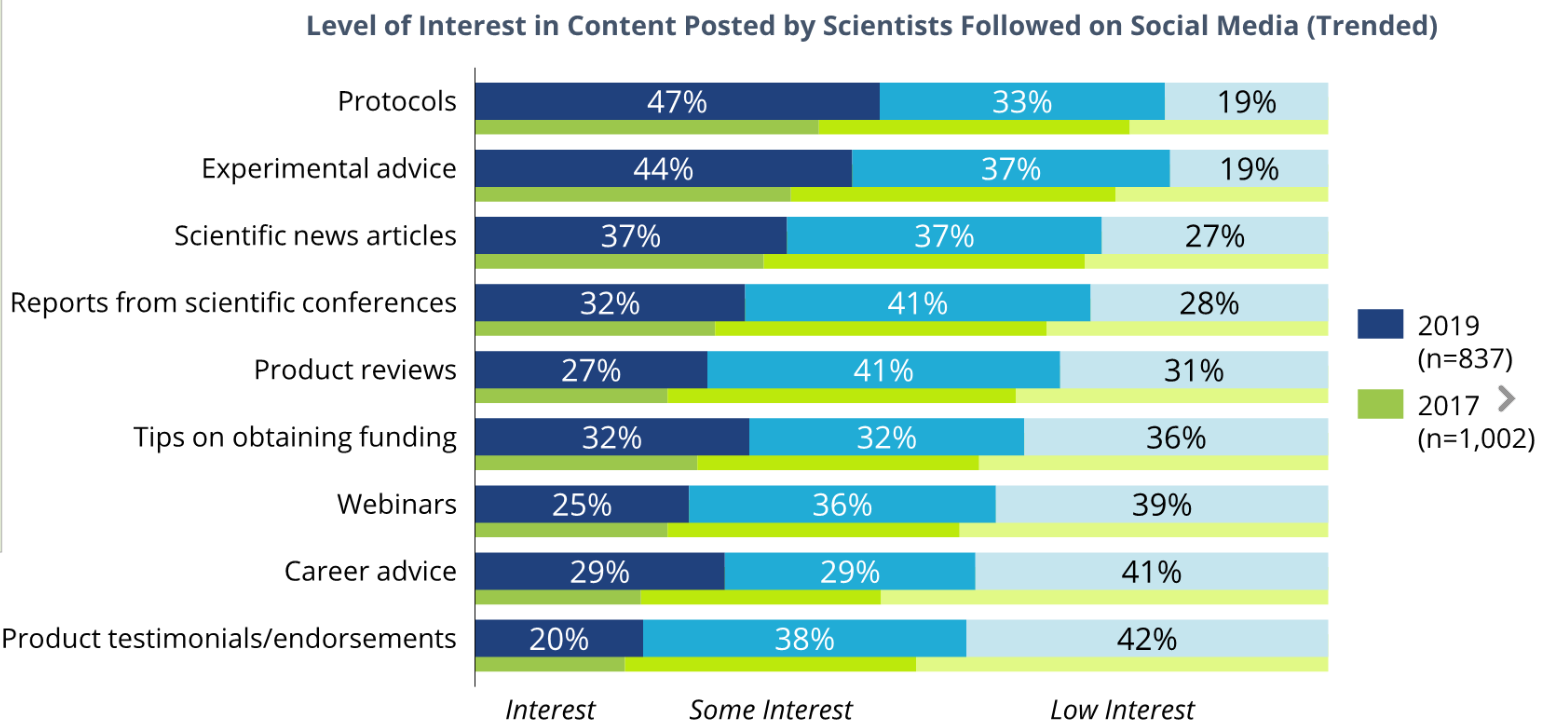
Over the last five years, there has been an increasing trend among scientists whereby 55% of scientists feel that they have less time to devote to reading/research. This paired with an increasing preference for interactive on-demand content suggests that scientists are changing the way they engage on social media and the types of news and stories they seek. Research suggests that scientists are more interested in protocols, experimental advice and career advice on their social media platforms than before. However, rather than viewing a journal article or book to learn about these topics, it seems that scientists are seeking short and relevant posts and blogs where they can easily digest a topic of their choosing.
The use of hashtags and interactive media on social media has transformed targeted engagement on social media. For example, hashtags allow you to use keywords, are searchable, and create brand recognition by being memorable and/or thought provoking. Again, interactive media such as images, graphic interchange format (gifs) and videos allow scientists to stand out and spurs curiosity among viewers. Like the common adage goes, a picture is worth a thousand words.
Science influencers are instrumental in reaching scientists via social media. They help propagate news and information in a non-biased way. They have the ability to cultivate relationships utilizing personalities that appeal to targeted audiences. These types of personalities can include prominent scientists, conference speakers, science writers and bloggers. Scientists are nine percent more likely to follow other scientists on social media than they were two years ago. Platforms that are increasingly being used by scientists are LinkedIn, ResearchGate, and Twitter. Alternatively, Facebook and YouTube have experienced decreased activity among scientists.
And yet, there are thousands of influential scientists on social media, along with a seemingly infinite number of affiliations, ethical/political/scientific opinions, and causes to choose from. Some great examples in the life sciences that you might be interested in checking out on Twitter are:
- Gitte Pedersen of Genomic Expression with the clever handle @DNABARCODE
- Francis S. Collins (@NIHDirector) of the National Institutes of Health director
- Susannah Fox (@SusannahFox) former CTO of the US Department of Health and Human Services
- Matthew Herper (@matthewherper), a science writer for Forbes.com
- Venture capitalists specializing in biotech like Josh Berlin (@BioPharmaJosh) or Brad Loncar (@bradloncar)
- And many, many more!
So the next time you open your social media apps (which might be right now!) we ask you to consider how you are changing the landscape of science communication. We also invite you to join the social media revolution and share all the exciting science that you are doing with the world. We can’t wait to hear about it!
Interested in telling us how you use social media? Tell us!
Want to learn more, we would love to talk to you, join our conversation on social media.
Copyright © 2019 scienceboard.net



